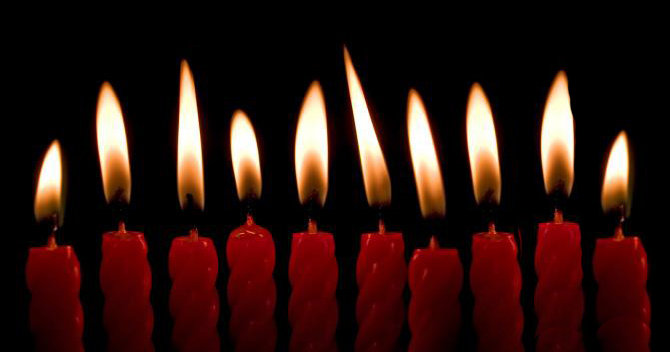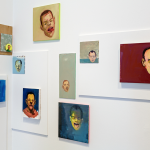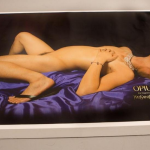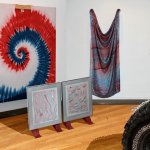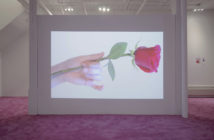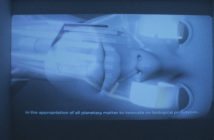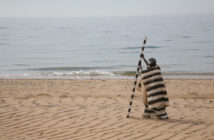Looking back over the 135 issues in our archive and the hundreds of essays and articles we've posted since our relaunch it's always hard to pick out favorites. Therefore we figured the best way to mark our 10-year anniversary is to delve into our numbers and find what you, the audience, have deemed interesting and exciting reads. So without further ado, here is the first half of our 10 most popular essays, articles, and interviews from the last 10 years. Stay tuned to tomorrow (our official anniversary!) for the second half of this list.
Help us keep going for another 10 years! Click here to make a donation and support your favorite independent arts publication. It's 100% tax-deductible. And we love presents.
.......................................................................................
 Installation view of Steve Locke: there is no one left to blame at the Institute of Contemporary Art/Boston. Photo: John Kennard.
Installation view of Steve Locke: there is no one left to blame at the Institute of Contemporary Art/Boston. Photo: John Kennard.10. Queering the ICA by Evan Smith
October 16, 2013
Brian wrote briefly about this article in his 2013 year-end picks. At the time he wrote, "One of the reasons that I love this piece is because it was a long time coming—Evan first expressed to us an interest in writing about this subject roughly a year ago. The overlapping exhibitions of Steve Locke, Mary Reid Kelley, and Amy Sillman presented him with an opportunity to advance a well-considered discussion on the ICA's apparent curatorial perspective of 'how art today fuses the personal to the social, with a deep investment in queer and feminist ideas.'. . . Evan [accredits]responsibility to institutions and curators in the role they play in the historicization of social movements and the obligation they carry in properly communicating the social context of exhibitions and individual pieces of art. To this point Evan writes, 'If an artist’s role is to "show people what they need to see," it’s the curator’s role to facilitate that encounter, to open it up to a wider audience, and to provide context to the artist’s personal language. It means going beyond a hermetic relationship to the artists’ practices, ensuring that their ideas "touch ground" and make contact with the people who could most benefit from them. What the ICA has done by consistently showing work of often-marginalized members of society is fantastic. What they still can do by addressing these contexts in a way that is accessible to a broad audience is where the institution can make history.'"
9. 9pm to 5am: Underground Boston and Mark Morrisroe by Leah Triplett
November 12, 2012
I can hardly believe that it’s been almost two years since BR&S published "9pm to 5am," my look at Mark Morrisroe’s 1980s Boston, in the November ’12 journal. This essay really began much earlier than that fall, however, and in a different publication. When I picked up the March 2011 Art in America, flipping to a review of Mark Morrisroe’s retrospective at Artists Space, I was surprised to read about his Boston origins and exploits. Intrigued by the brief mention of Morrisroe’s life and times around Beantown, I headed for the archives, hitting the Museum School, the MFA and others before interviewing some of Morrisroe’s friends, including Gail Thacker, who was with Mark when he died in 1989. Taking its title from my interview with Mike Carroll (who now owns The Schoolhouse Gallery in Provincetown), this essay is meant to conjure Morrisroe’s life and times in early 1980s Boston, a period and place largely (and unfortunately) ignored in Helen Molesworth’s This Will Have Been.
8. Lucy Kim: All is not what it seems by Brian Quirk
September 16, 2013
Video by Shane Godfrey and Meg Elkinton
The private studio life of an artist is something that we at BR&S feel is too often obscured which is why, when Brian Quirk wrote this excellent artist profile of Lucy Kim for our September 2013 Journal, we were thrilled to read it. He writes, "'What can we learn today?' . . . [T]his seemingly simple question asked each day by an artist in the theater or in the studio can lead to a thrilling creative ride and result in innovative artwork. Every day Lucy is asking this question in her studio, and her idiosyncratic and surprising process makes us see the world in a whole new way." We were lucky to have an even more intimate look at Lucy thanks to the above video by Shane Godfrey and Meg Elkinton.
 Clifford Landon Pun
Clifford Landon PunOpium, No Pun Intended,
2011 Digital print on plinth, 36" x 54
Image Courtesy Melissa Blackall Photography
7. Me Love You Long Time (MLYLT) at Mills Gallery by Robyn Day
March 18, 2013
Me Love You Long Time, a group exhibition curated by Edwin Ramoranof for the Boston Center for the Arts Mills Gallery, was a staggering show composed of over 50 Southeast Asian and Asian American artists. Of it Robyn wrote, "In a visual and aural cacophony of video, photography, installation and more, those artists tell us their stories of life lived in the interstices of sex work, the global sex trade, gender and sexuality, identity and sexploitation. MLYLT is a double-entendre exhibition of artwork, bodies, and sex, a 'sexhibition,' if you will, that takes sexploitation and sex work as its organizing themes without becoming exploitative itself in the process." Her review of the exhibition proved to be popular enough to make it number 7 on our list and even caught the eye of Art F City who spoke of it thusly, "I want to see a contemporary art show in Boston. Robyn Day offers a clear and satisfying review of "Me Love You Long Time," a campy-sounding show about sex work and the sex trade, from artists and activists. Sounds like playful engagement with the real world that we’re missing from Chelsea."
6. Trending the Shallows: Notes on The Jogging and the Art of Politics by Evan Smith
December 16, 2012
Published on the heels of the 2012 election, Evan Smith's "Notes on The Jogging" corresponded with the group's exhibition at MassArt's Godine Family Gallery. Part review, part reaction, Smith balances criticism with investigation here, questioning The Jogging's aesthetic and conceptual origins. Assessing irony as a style, a tool and an attitude, Smith writes that "it seems now the only position of meaningful dissent left to the artist who work within the margins is an ironic one."
To find more articles by those authors above, click their following names to be redirected: Evan Smith, Leah Triplett, Brian Quirk, Robyn Day.

